あなたの手に馴染む、特別を一本を。
Find your perfect knife.
日常の料理に寄り添う一本から、職人用の本格仕様、飾って眺めたくなる美術品まで。
あなたの感性や暮らしにふさわしい一本が、きっと見つかります。
Whether you're looking for an everyday kitchen companion, a professional tool for a craftsman, or a beautiful piece of art to admire, we have a knife that fits your unique sensibility and lifestyle.
3つの特徴
Three Features
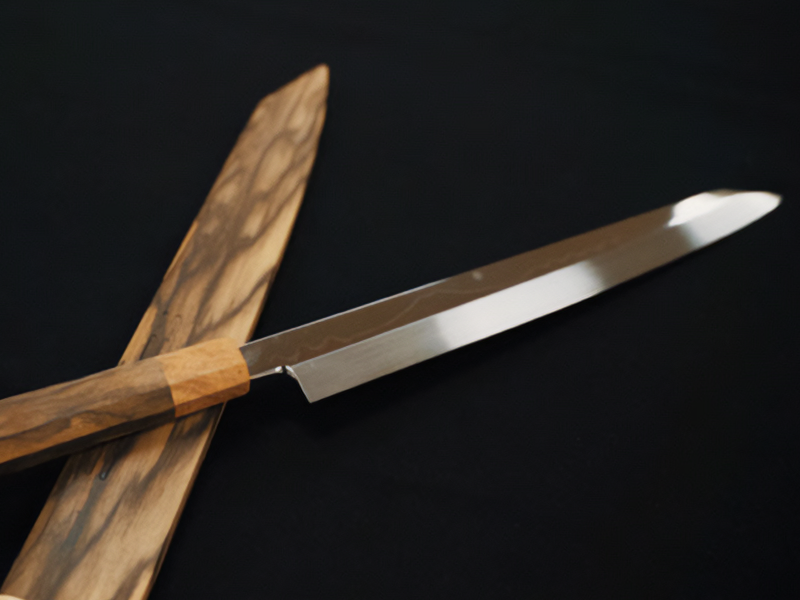
鋭い切れ味
Sharp Cutting Performance
伝統的なたたら製鉄で生まれた玉鋼や厳選された鋼を使い、熟練の職人が鍛え上げることで、まるで刀のような鋭い切れ味を実現。食材の繊維を潰さず、美しい断面に仕上がります。
Using tamahagane produced through traditional tatara ironmaking and carefully selected steels, skilled craftsmen forge each blade to achieve a cutting edge as sharp as a sword. Ingredients are sliced cleanly without crushing fibers, leaving beautiful cross-sections.
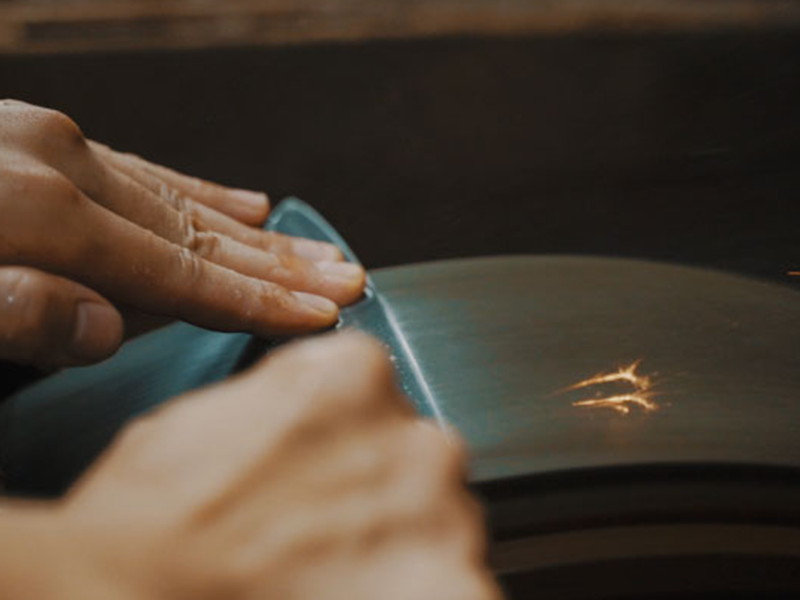
優れた耐久性
Exceptional Durability
堺の包丁は「打ち刃物」と呼ばれる鍛造製法でつくられます。何度も鍛え叩くことで金属組織が緻密になり、折れにくく欠けにくい強靭な刃に。玉鋼の特性と相まって、長く使える耐久性を誇ります。
Sakai knives are made using the forged “Uchi-butsumono” method. Repeated forging densifies the metal structure, creating blades that resist chipping and breaking. Combined with the unique qualities of tamahagane, this ensures long-lasting durability.

職人技と伝統が生む品質
Quality Born from Craftsmanship and Tradition
600年続く堺の鍛冶文化のもと、鍛冶職人と研ぎ師が分業で一丁を仕上げる独自の製法。その精緻な手仕事が、刃先の鋭さと柄の美しさを引き出し、使うほどに手に馴染む一本へと育ちます。
Under Sakai’s 600-year-old blacksmithing culture, blades are completed through a division of labor between blacksmiths and sharpeners. This meticulous handcrafting brings out the sharpness of the edge and the beauty of the handle, creating knives that become more comfortable and personal with use.
使うたび、物語が増えていく
The more you use it, the more special it becomes
包丁には、用途や切り方に合わせたいろいろな種類があります。
形や刃の構造(片刃・両刃)に工夫がされており、その一つひとつに職人の技とこだわりが込められています。さらに、刃だけでなく柄にも多彩な表情があり、手に取るとまるでオーダーメイドのような心地良さを感じられます。堺打刃物の包丁は、使うたびに手に馴染み、日々の料理とともに歴史を重ねていく存在です。
There are many kinds of kitchen knives, each designed for different purposes and cutting techniques.Both the shape and the blade structure (single-edged or double-edged) are thoughtfully crafted, with the skill and dedication of artisans poured into every piece.Not only the blades but also the handles come in a variety of styles, giving each knife a sense of uniqueness—as if it were made just for you.Sakai knives grow more familiar in your hand each time you use them, becoming companions that share in the history of your everyday cooking.
KNIVES
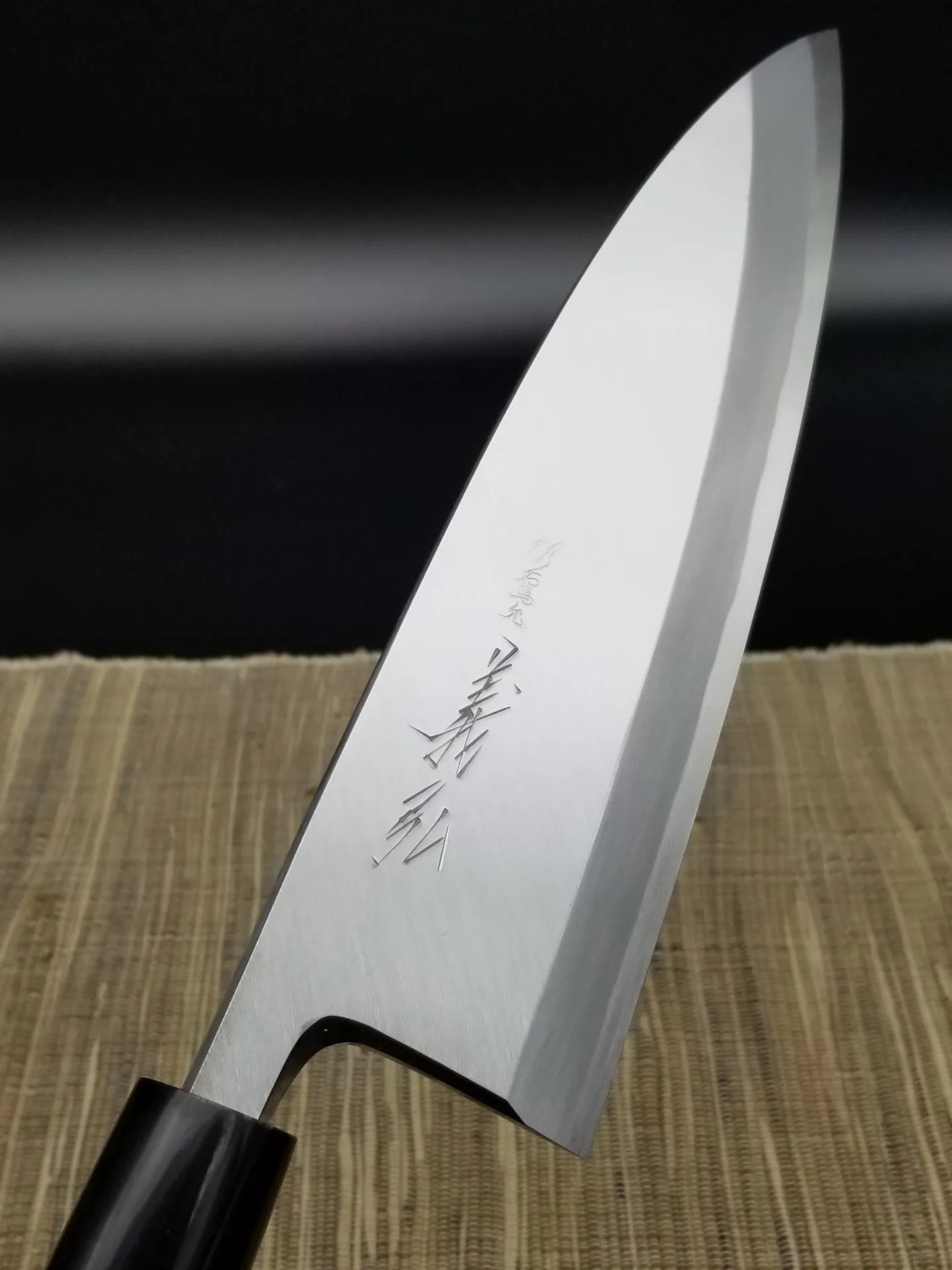
出刃
Deba
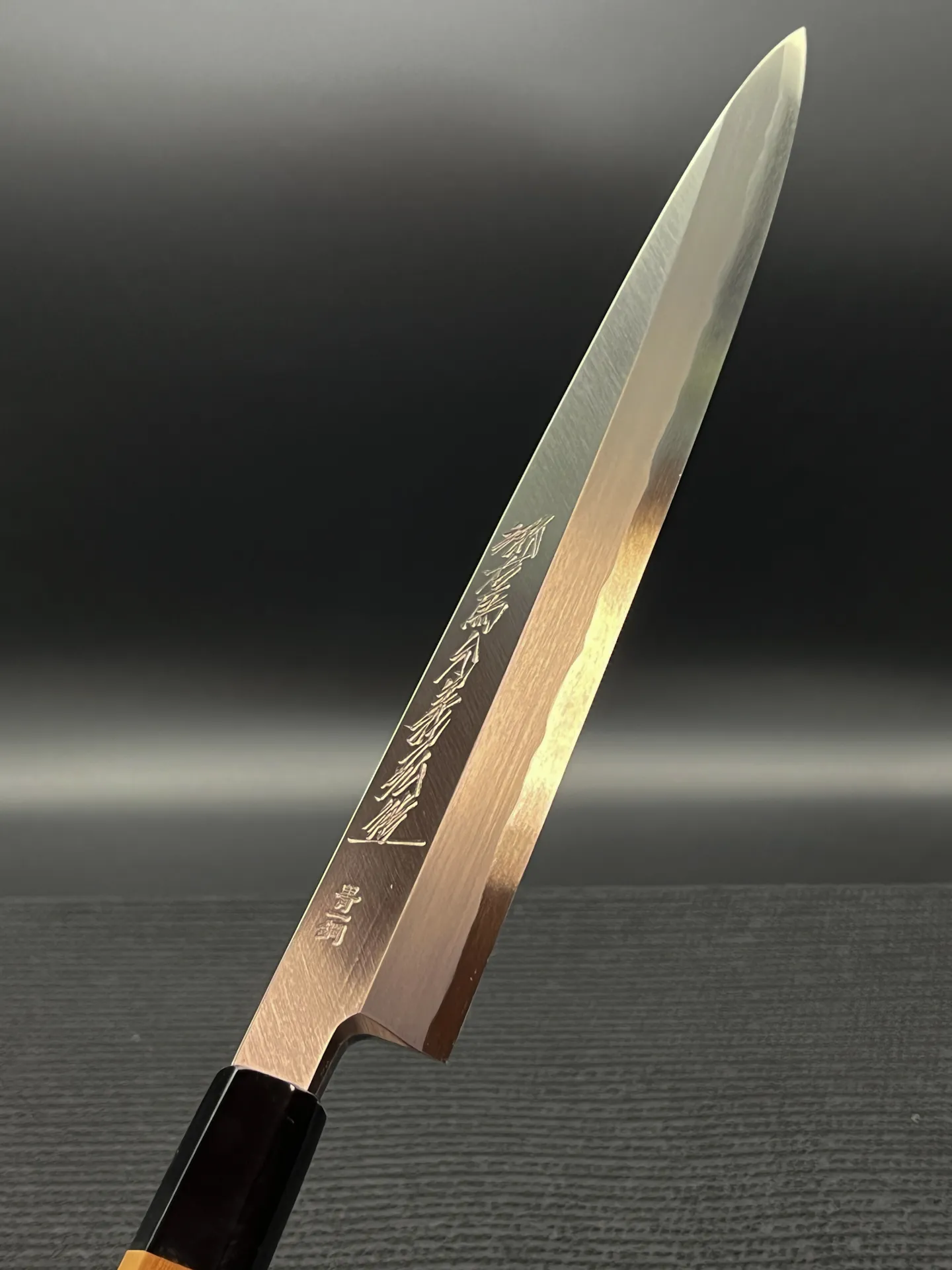
柳刃
Yanagiba
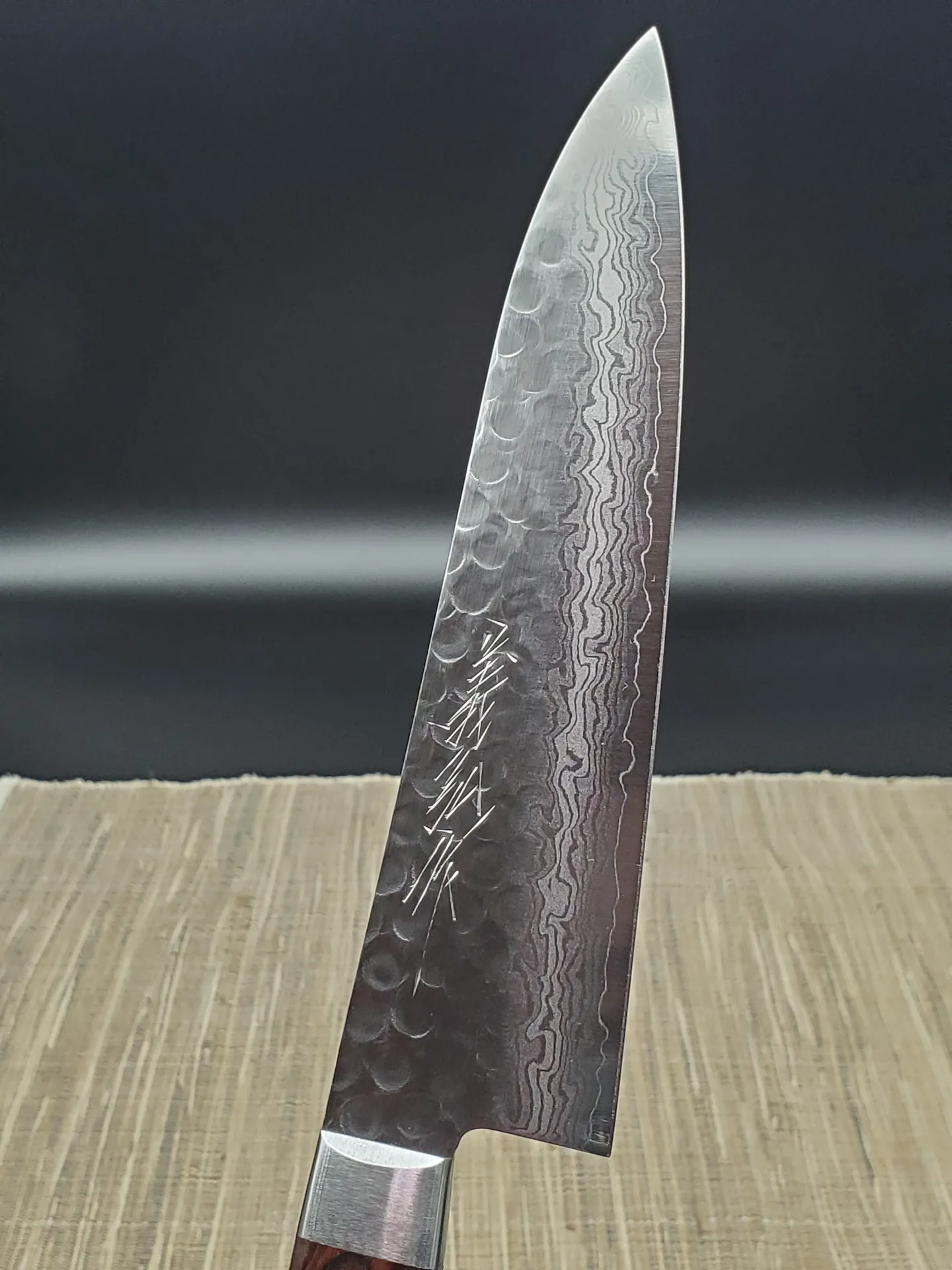
牛刀
Gyuto
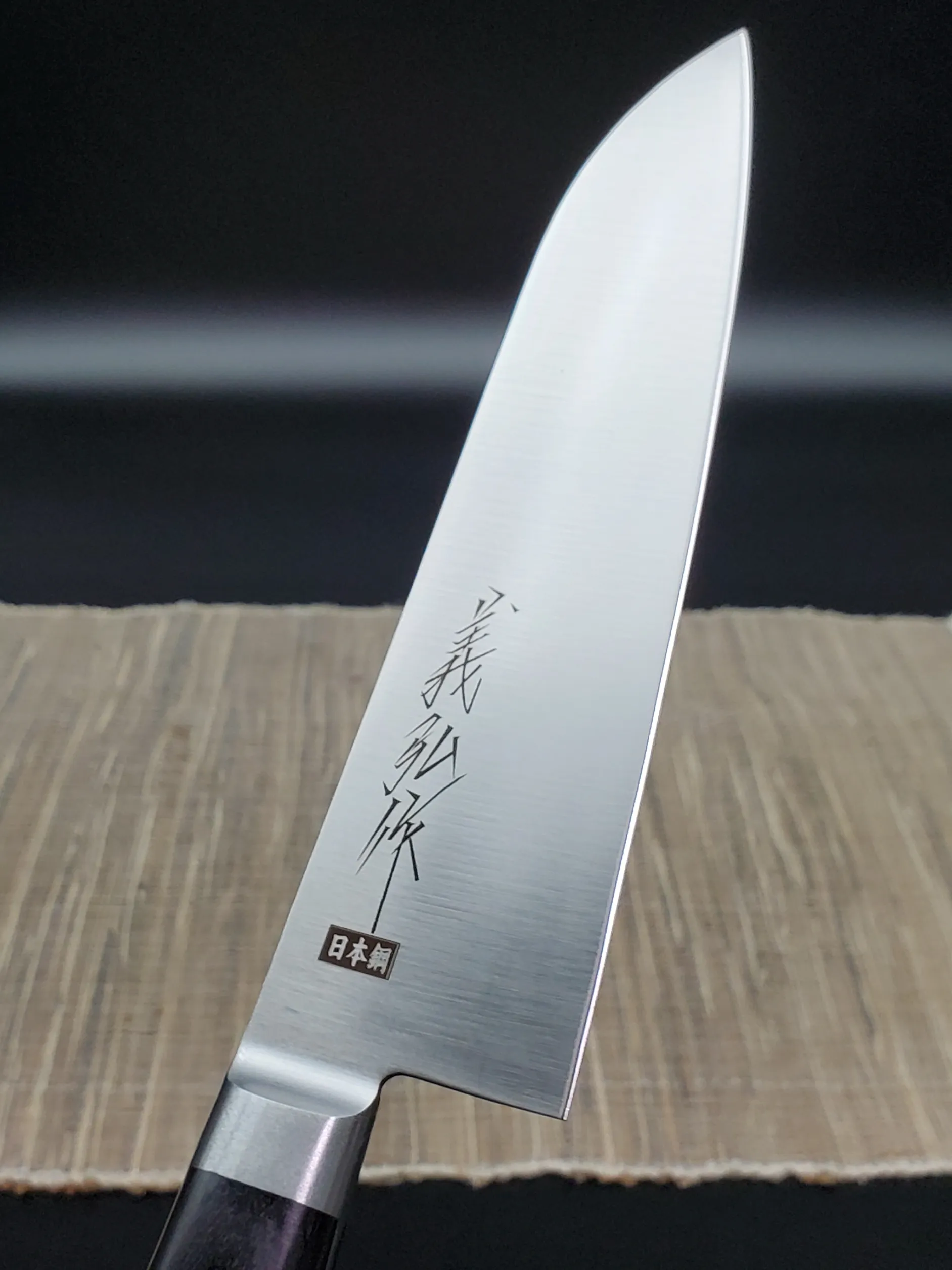
三徳
Santoku
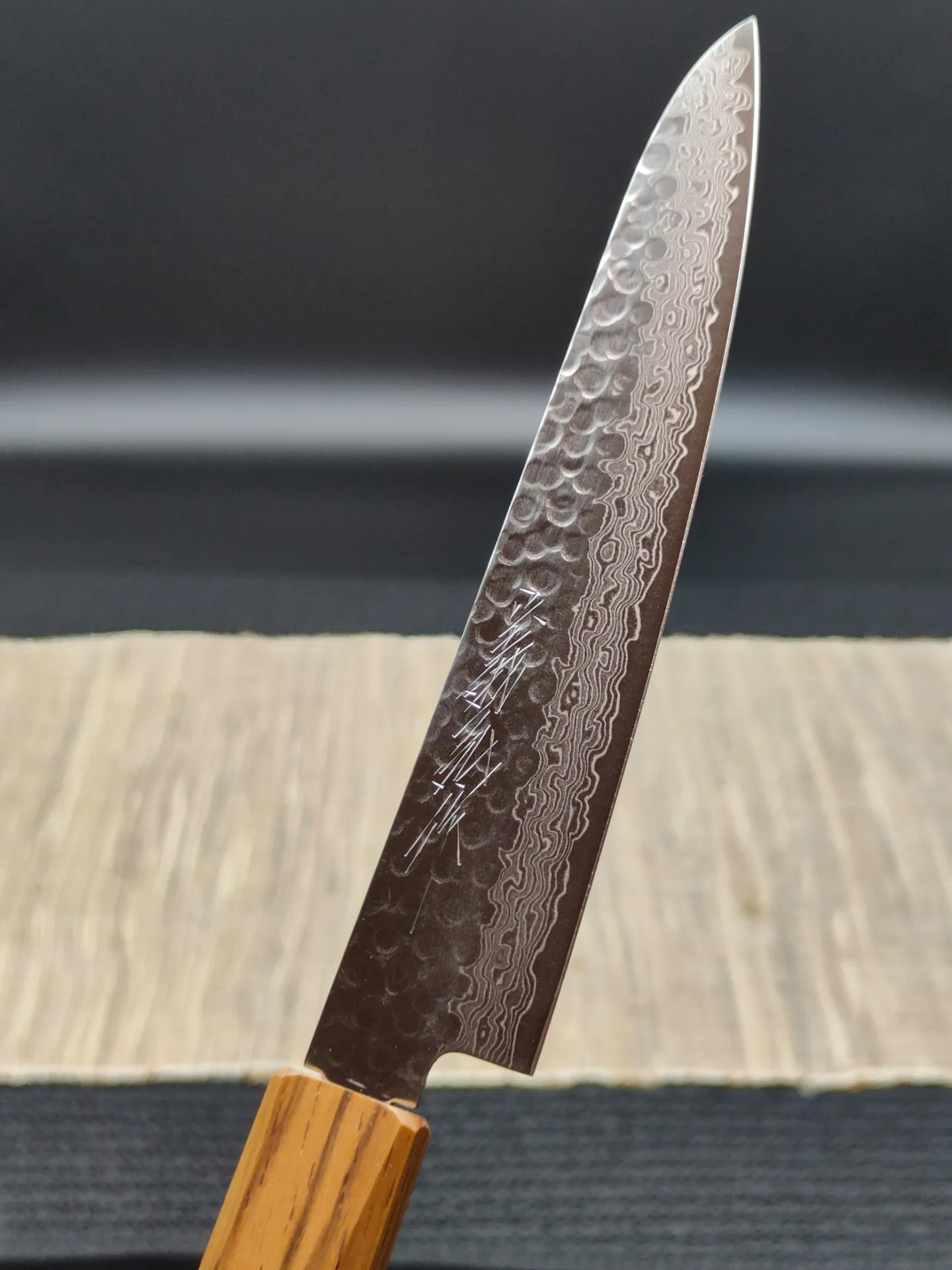
ペティ
Petty
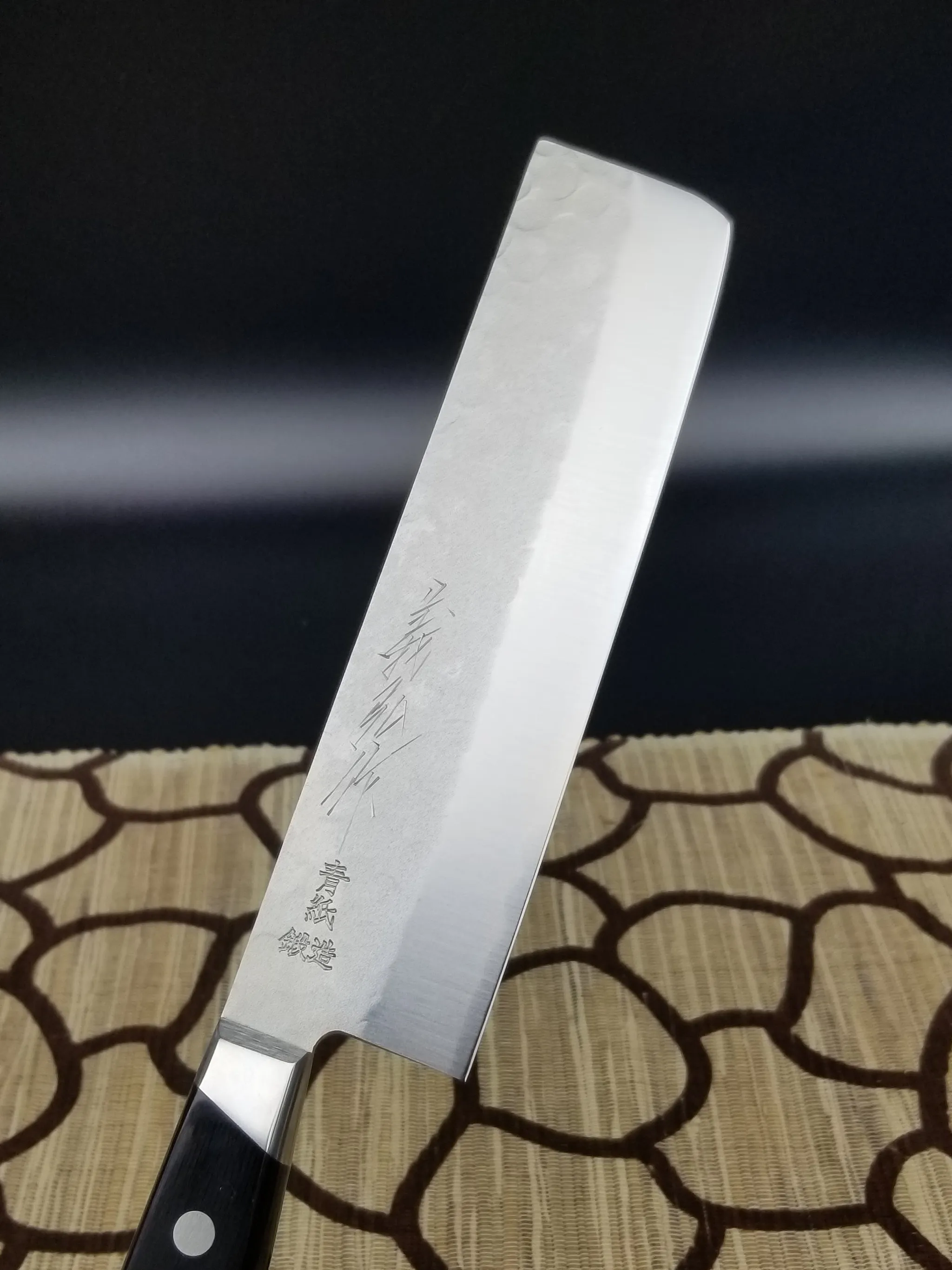
薄刃
Usuba
≫用途に合わせて選ぶ、日本の包丁
≫Japanese Knives: Selecting by Purpose
≫両刃包丁と片刃包丁の違い
≫The Difference Between Double-Bevel and Single-Bevel Knives
HANDLES
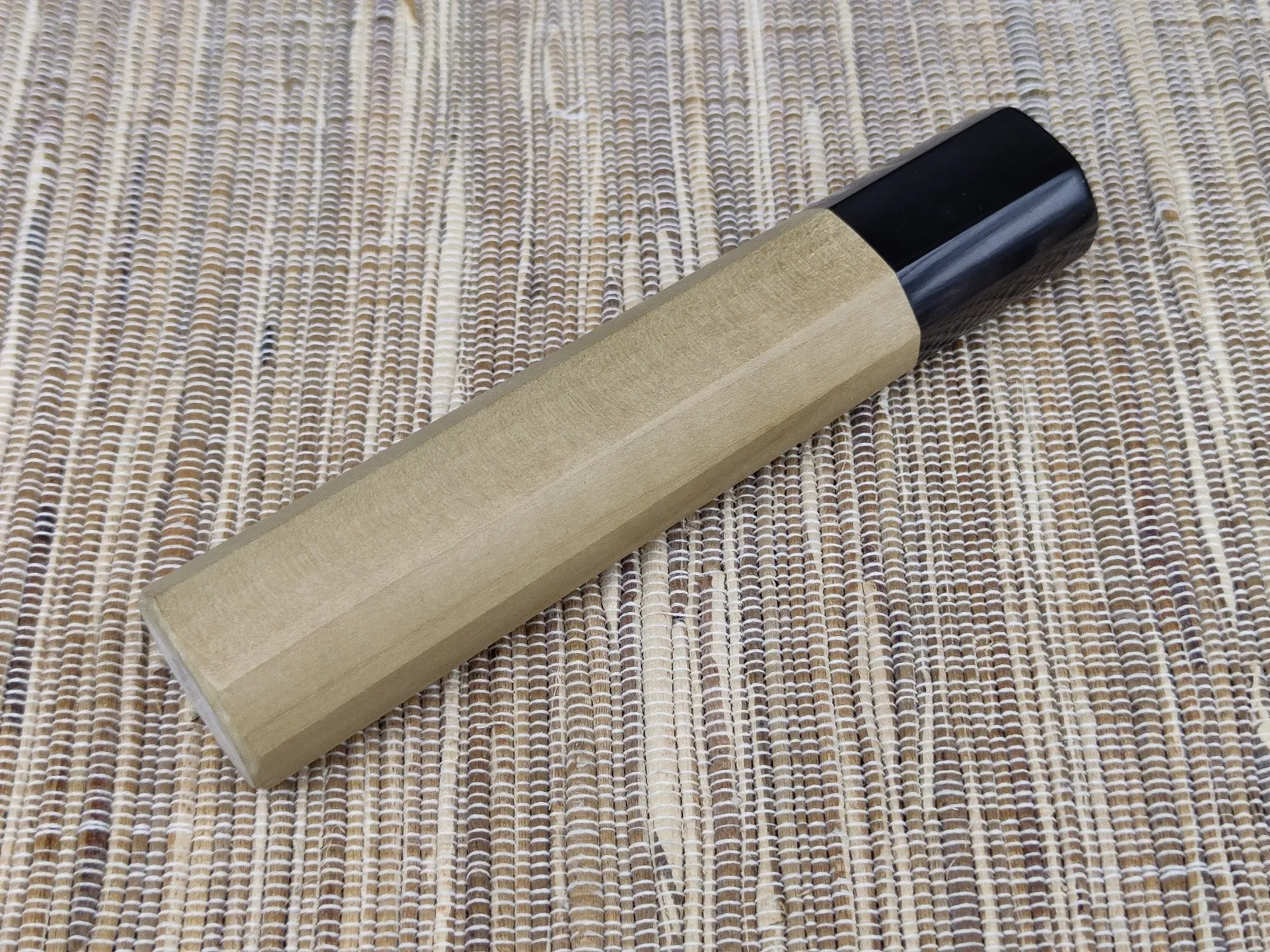

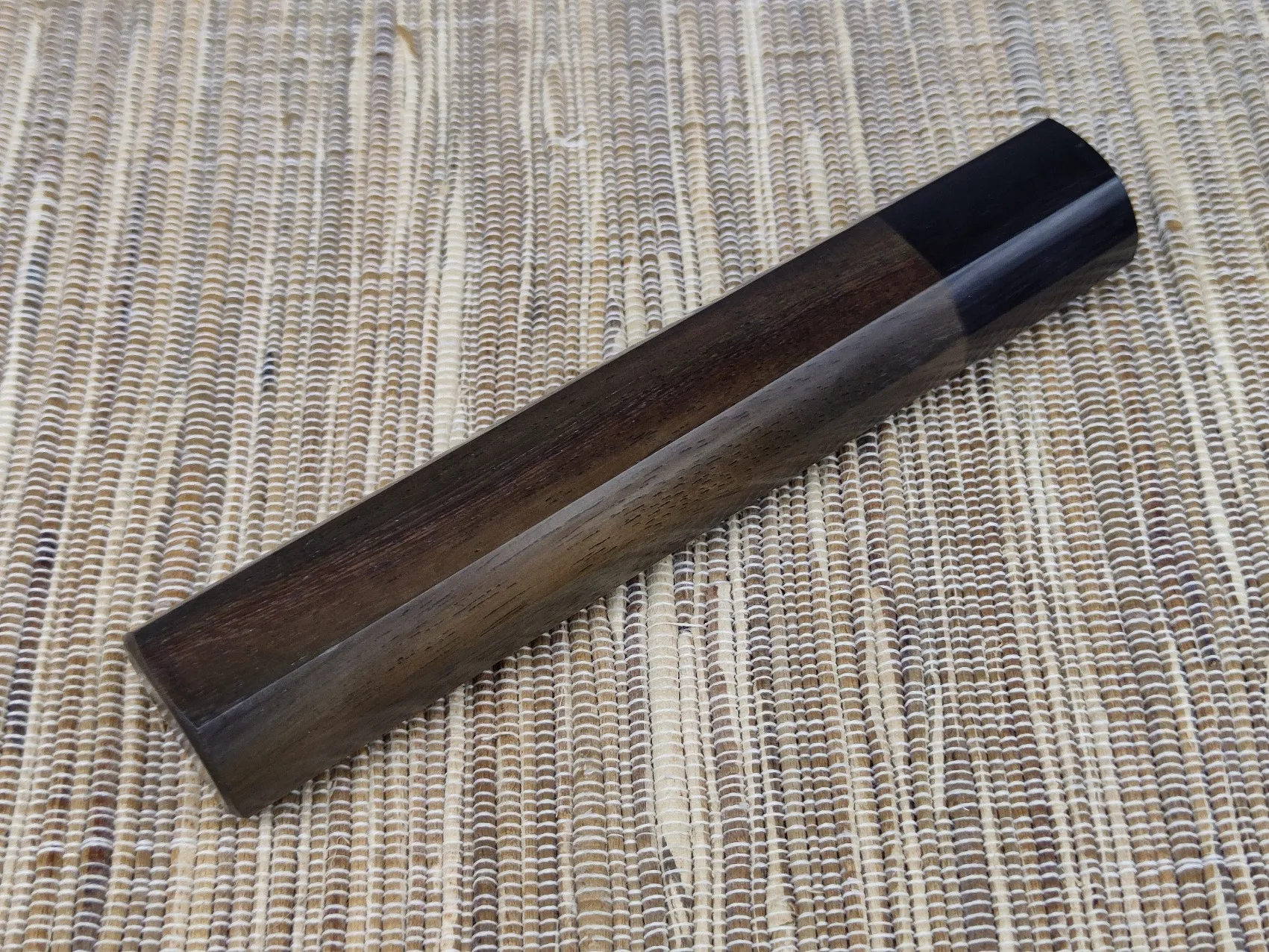
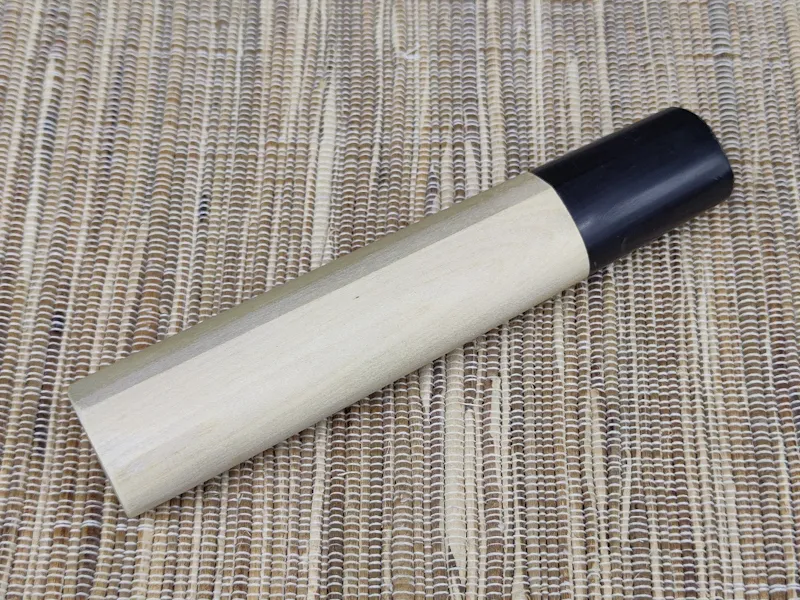
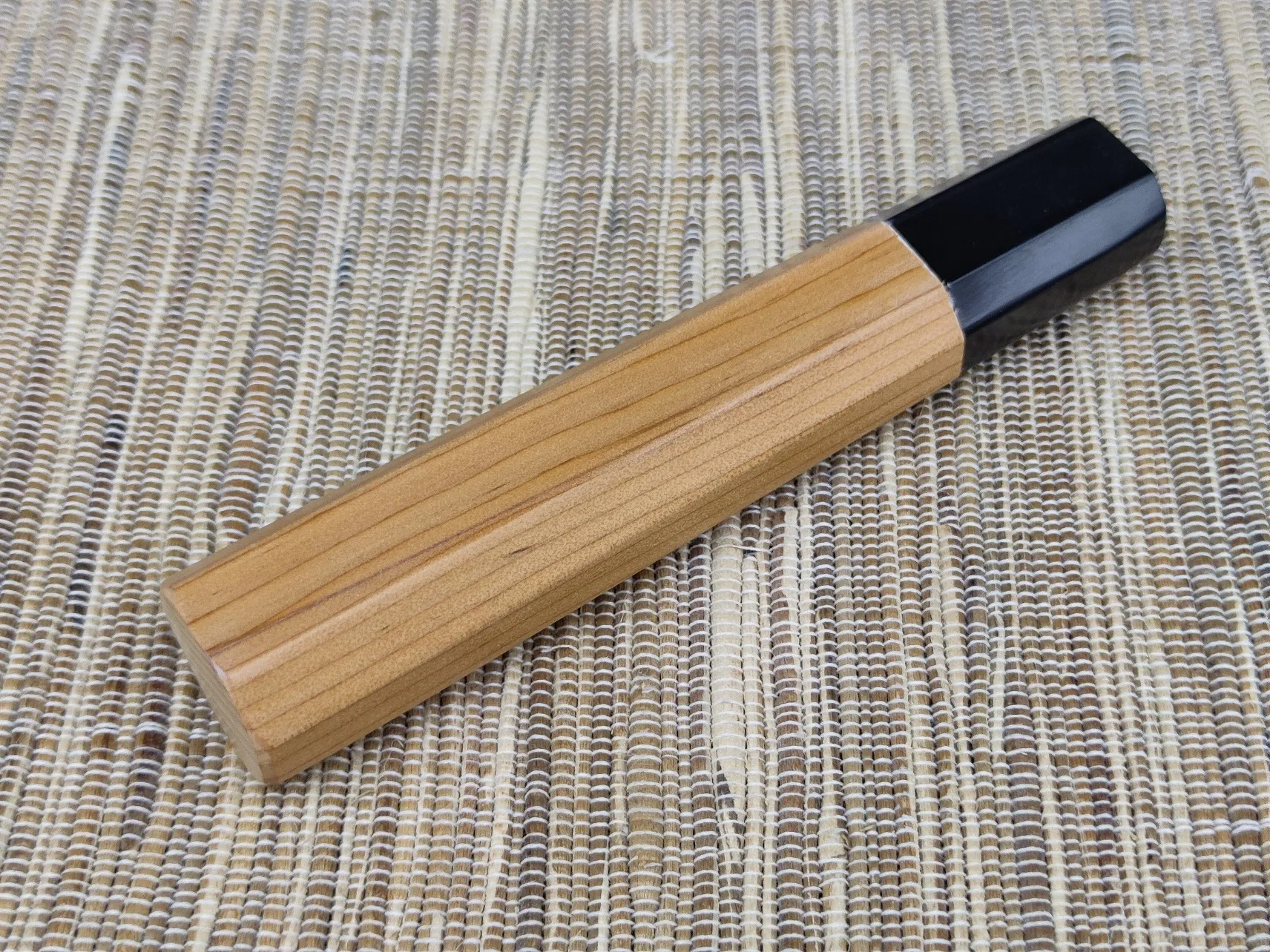
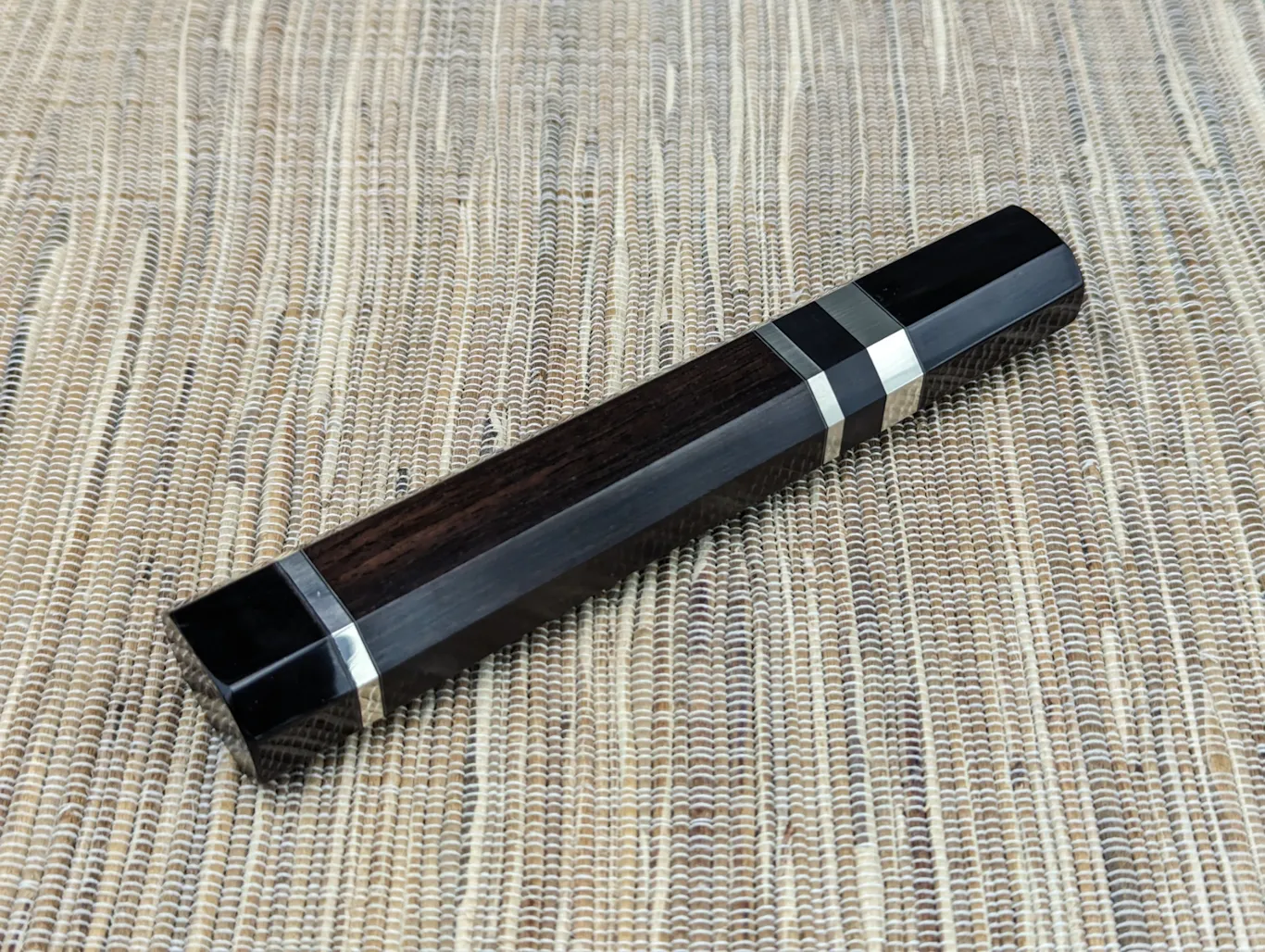

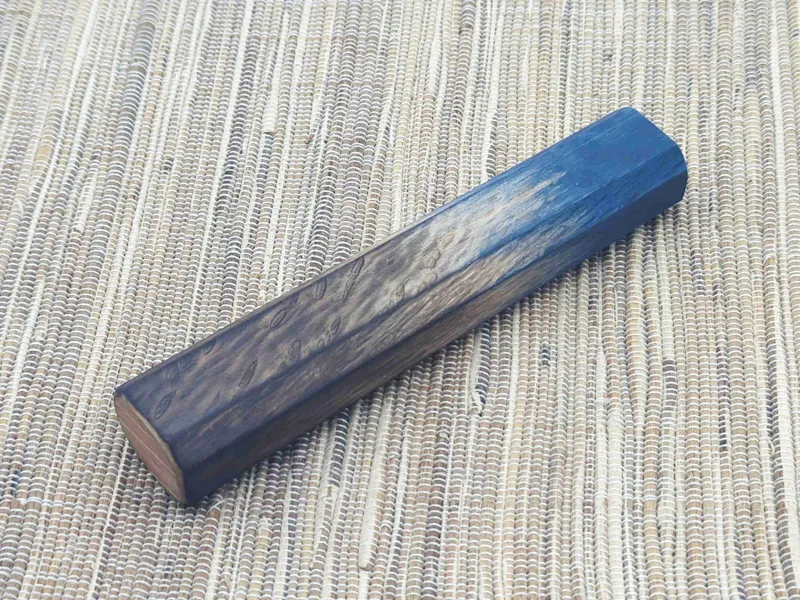
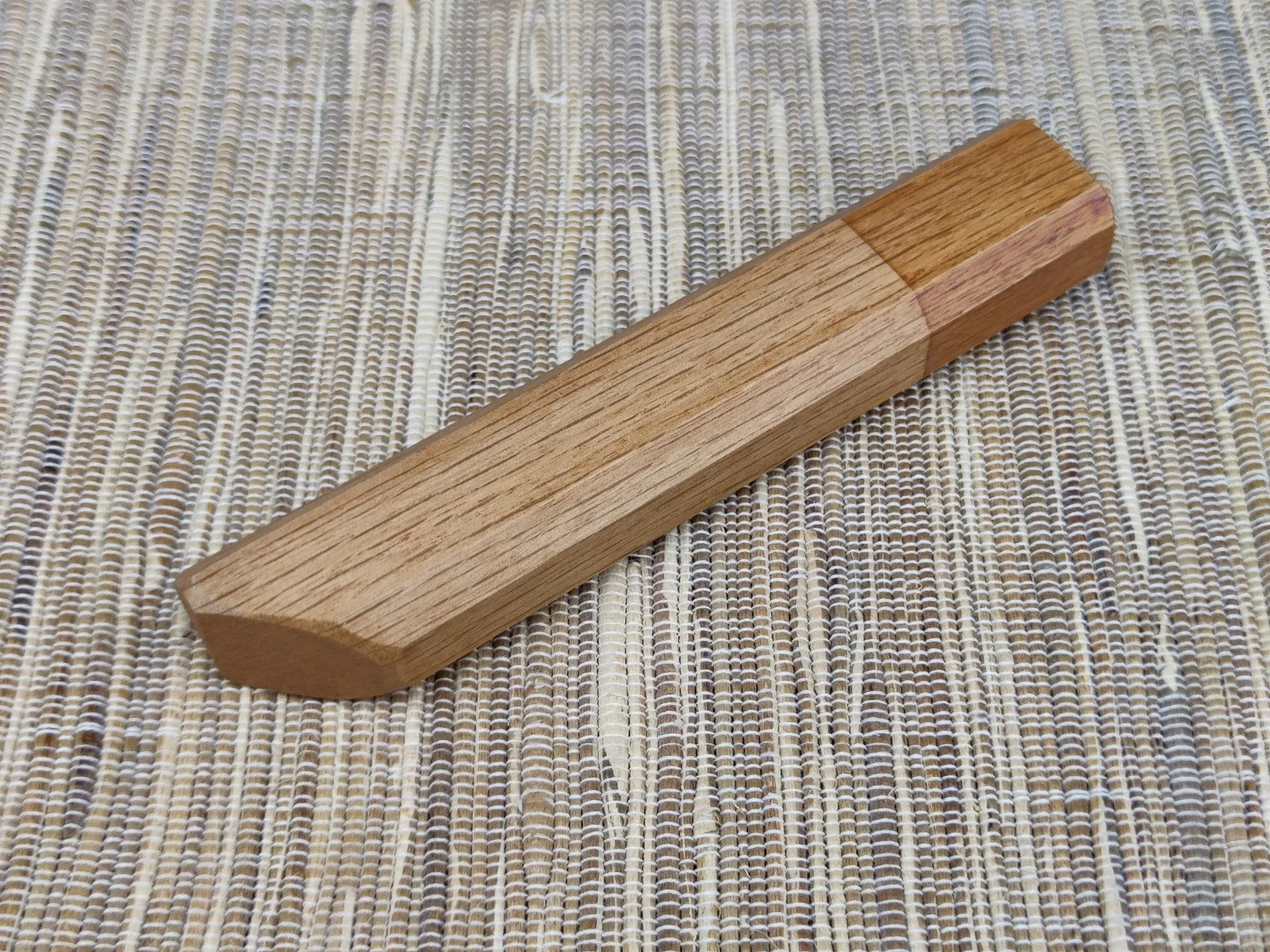
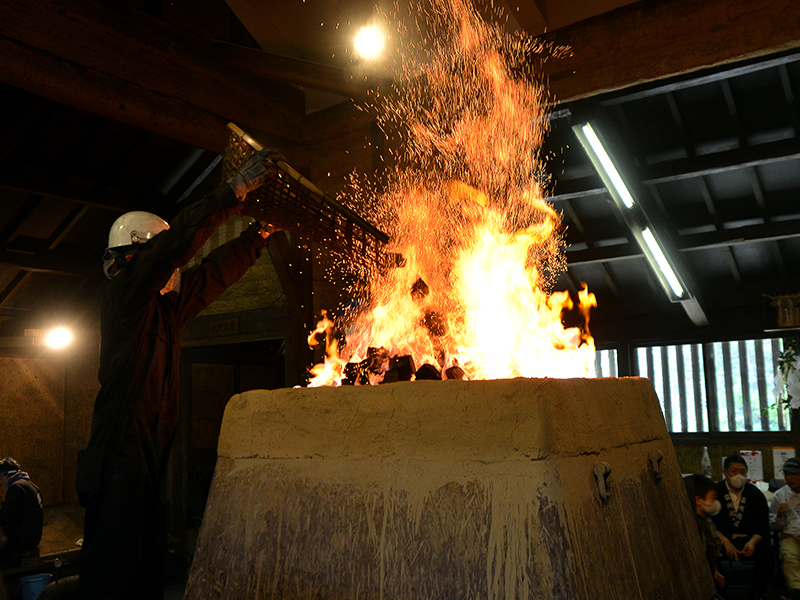
日本古来の製鉄技法
奥出雲 × たたら製鉄
「たたら製鉄」は、砂鉄と木炭を用いて土の炉でじっくりと精錬する日本古来の製鉄法です。
1400年以上の歴史を持つこの技術は、日本のモノづくりの原点とも言われています。良質な砂鉄が採れる島根県奥出雲では、たたら製鉄が盛んに行われ、国内の鉄需要を支えてきました。
1460年からたたら製鉄をはじめた田部家は、鉄を明治期にシカゴ・パリ万博へ出品し、その品質は世界的に高く評価されました。一度は大正末期に途絶えたものの、約100年の時を経て現代に復活し、伝統の技術と精神が新たな歩みを始めています。
An Ancient Japanese Iron-Making Technique
Okuizumo × Tatara Ironworks
Tatara ironmaking is a traditional Japanese ironmaking method that involves slowly refining
iron sand and charcoal in an earthen furnace.
This technique, which has a history of over 1,400 years, is said to be the origin of
Japanese manufacturing. In Okuchizukawa, Shimane Prefecture, where high-quality iron sand
can be found, tatara ironmaking has been actively practiced and has supported the domestic
demand for iron.
The Tanabe family, which began tatara ironmaking in 1460, exhibited iron at the Chicago and
Paris World's Fairs during the Meiji period, and its quality was highly praised worldwide.
Although it once ceased during the late Taisho period, it has been revived after
approximately 100 years, and the traditional techniques and spirit are now embarking on a
new journey.

玉鋼
「鉧」は、たたら製鉄で砂鉄と木炭を原料に炉で鉄を精錬した際に生まれる鉄の塊です。
その中心部にある純度の高い部分が「玉鋼」。白く輝くその色は、たたら製鉄の成功を祝うかのような神秘性を感じさせます。石のような形状は見る角度によってさまざまな表情を見せます。人間の知恵と技術が生み出した玉鋼の凛とした姿を、ぜひご覧ください。
Tamahagane
“Kera” is a lump of iron produced during the tatara ironmaking process, in which iron is
refined in a furnace using iron sand and charcoal as raw materials.
The high-purity portion at its center is called “tamahagane.” Its bright white color gives
it a mysterious appearance, as if celebrating the success of the kera ironmaking process.
Its stone-like shape reveals various expressions depending on the angle from which it is
viewed. Please take a moment to admire the dignified form of tamahagane, a product of human
wisdom and technology.
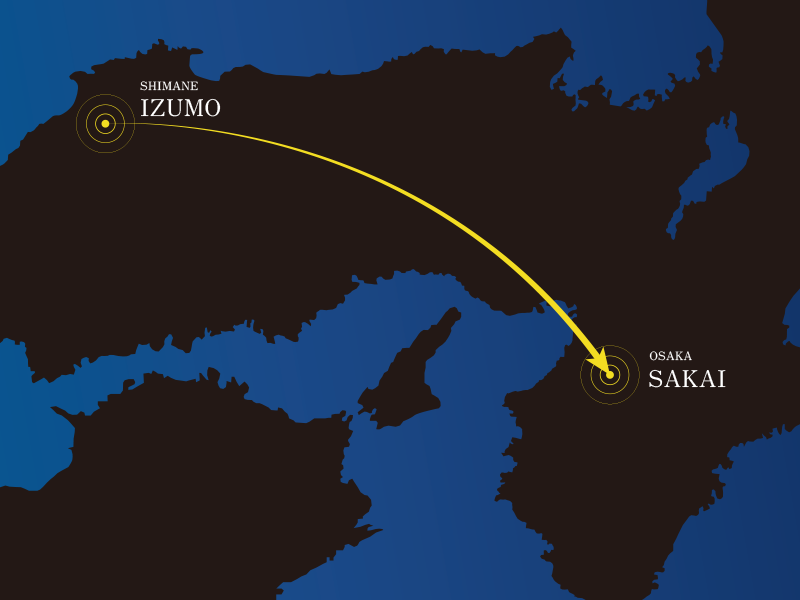
貴重な玉鋼を運んだかつての交易路
鉄の道
山陰地方でつくられた鉄の流通には、主に海運、水運、人馬による輸送が用いられました。
また出雲街道(※)も砂鉄や鉄製品を山陽方面へ運ぶルートであったとされ、別名「鉄の道」と呼ばれています。信仰や工業の発展に寄与したため、出雲街道の周辺には鉄づくりにゆかりのある神社や遺跡が点在しています。
※姫路を起点に中国山地を横断し出雲に至る山陽と山陰を結ぶ旧街道。
The old trade route for precious Tamahagane steel
The Iron Road
Iron produced in the San'in region was mainly transported by sea, water, and horseback.
The Izumo Kaido was also used to transport iron sand and iron products to the Sanyo region,
and was nicknamed the “Iron Road.” Due to its contribution to the development of religion
and industry, there are many shrines and ruins related to iron production scattered around
the Izumo Kaido.
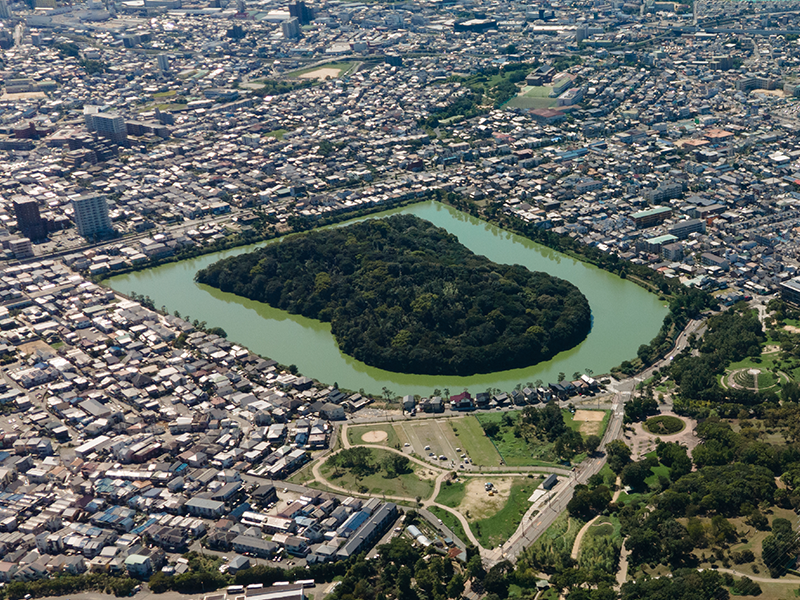
600年脈々と受け研がれる鍛冶技術
堺 × 刃物
堺では、古墳時代に古墳造営のため鍬や鋤などの農具を作る職人が集められ、工具や刀を作る技術が発展しました。
その後、鉄砲やたばこ包丁が伝来すると、培われた技術が生かされて製造が盛んになります。やがてたばこ包丁の需要が減少すると、家庭用包丁の製造へと移行し、現在に至るまで高い評価を受け続けています。
600 years of continuously refined forging techniques
Sakai × Knives
In Sakai, during the Kofun period, craftsmen were gathered to produce farming tools such as hoes and plows for the construction of burial mounds, and from there, the techniques for making tools and blades developed. Later, with the introduction of firearms and tobacco knives, these cultivated skills were put to use, and production flourished. As demand for tobacco knives eventually declined, the industry shifted to producing kitchen knives, which have continued to receive high recognition up to the present day.
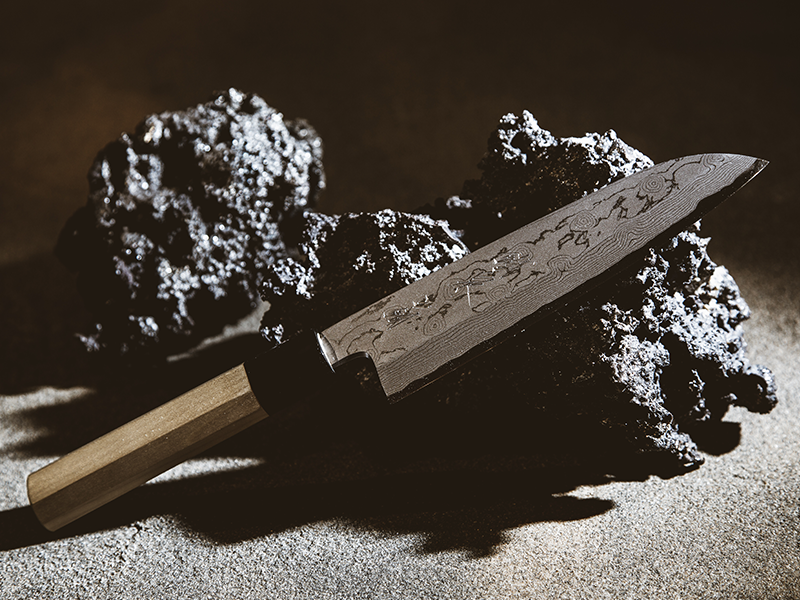
刃物匠の技が生む、究極の切れ味
堺打刃物
「堺打刃物」とは、大阪府堺市にて生産される高品質な刃物の総称です。
製造工程は、鍛冶・研ぎ・柄付けの大きく3つに分かれており、各工程を専門の職人が担当する分業制が特徴です。この仕組みにより、類を見ない精緻な仕上がりと、安定した品質を実現しています。
鋭い切れ味と使いやすさは、多くのプロ料理人に支持されており、国内外問わず高い評価を受けています。機能性に加え、伝統工芸品のような美しさも兼ね備えているのが堺打刃物の魅力です。
The ultimate sharpness created by the blade-smith's skill
Sakai Knives
“Sakai cutlery” is a general term for high-quality cutlery produced in Sakai City, Osaka
Prefecture.
The manufacturing process is divided into three main stages: forging, sharpening, and handle
attachment, each handled by specialized craftsmen in a division of labor system. This system
enables unparalleled precision and consistent quality.
The sharp cutting performance and ease of use are highly regarded by many professional
chefs, earning high praise both domestically and internationally. In addition to
functionality, the beauty reminiscent of traditional crafts is another charm of Sakai-made
cutlery.
≫堺刃物の製造工程
≫Manufacturing Process of Sakai Knives
5つの質問でわかる、あなたの包丁タイプ診断。
もし包丁に性格があるとしたら、あなたはどのタイプ? 豪快?繊細?それとも万能?
あなたの料理スタイルにぴったりの「包丁の相棒」が見つかるかも!
Discover your knife type with 5 simple questions.
If a knife had a personality, which type would you be? Bold? Delicate? Or versatile? Answer a few easy questions to find the perfect knife companion that matches your cooking style.



